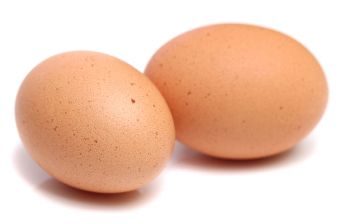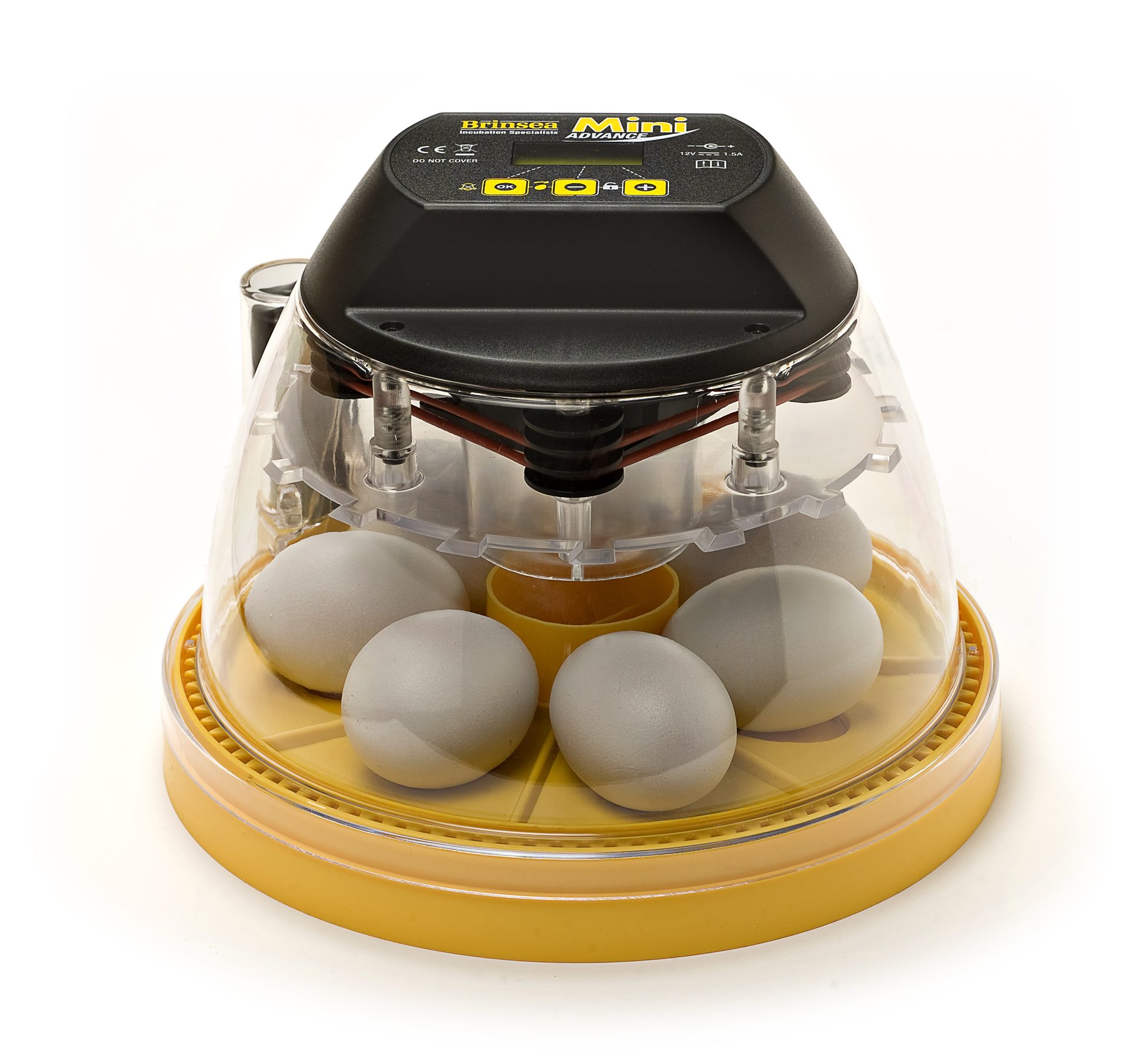- Jan 11, 2012
- 81
- 114
- 81
This post is sponsored by Brinsea
What if the power goes off!? Will my incubating eggs be damaged?
This is a question frequently asked by anxious breeders particularly in the summer, usually after a power outage caused by an unexpected thunderstorm.
 Cooling is an entirely natural process as most birds will get off the nest at least once a day and leave the eggs unheated for a significant time. It is a surprising fact that although eggs must have very stable temperatures to incubate successfully, periodic cooling can be a good thing and far from harming the development of chicks, can actually lead to more successful hatching. For this reason Brinsea have now incorporated a cooling option in all of their Advance and EX models of egg incubators for 2012.
Cooling is an entirely natural process as most birds will get off the nest at least once a day and leave the eggs unheated for a significant time. It is a surprising fact that although eggs must have very stable temperatures to incubate successfully, periodic cooling can be a good thing and far from harming the development of chicks, can actually lead to more successful hatching. For this reason Brinsea have now incorporated a cooling option in all of their Advance and EX models of egg incubators for 2012.
But controlled periodic cooling for an hour or so every day is very different from an unexpected loss of power for much longer periods of time. The measures to remedy the situation and limit damage to the embryos will depend on the age of the embryo, the temperature range it is exposed to and the duration of that exposure.
The five Incubation Temperature Zones:
Research carried out by a number of scientists over many years identified five temperature zones each of which is characterized by its major effect on the
developing embryo. These zones are not clear cut. There is some overlapping.
Zone of heat injury
Zone of hatching potential
Zone of disproportionate
development
Zone of suspended
development
Zone of cold injury

Zone of heat injury (above 40.5°C/104.9°F)
At continuous temperatures above 40.5°C (104.9°F) no embryos would be expected to hatch. However the effect of short periods of high temperature is not necessarily lethal. Embryos up to 6 days are particularly susceptible, older embryos are more tolerant.
Zone of hatching potential (35 - 40.5°C/104.9 - 84.5°F)
Within this range there is the possibility of eggs hatching. The optimum (for hens) is 37.8 °C (100.4°F). Above this temperature hatches will be reduced and the number of unhealthy and deformed chicks will increase.
Continuous temperatures within this range but below the optimum slow development and increase mortalities. However it is again evident that early embryos are more susceptible to continuous slightly low temperatures than older embryos.
Zone of disproportionate development (27 - 35°C/80.6 - 95°F)
Eggs kept above 27°C (80.6°F) will start to develop but some parts of the embryo will develop faster than others and some organs may not develop at all. Below 35°C (95°F) no embryo is likely to survive to hatch. Typically the heart is much enlarged and the head development more advanced than the trunk and limbs.
The temperature at the lower end of this range is sometimes referred to as ‘Physiological zero’ - the threshold temperature for embryonic development. Unfortunately different organs appear to have different thresholds resulting in an unviable embryo.
Zone of suspended development (-2°C - 27°C/28.4 - 80.6°F)
Below about 27°C (80°F) no embryonic development takes place. Prior to incubation, eggs must be stored in this temperature range (preferably around 15°C/59°F).
Zone of cold injury ( -2°C/28.4°F)
Below this threshold ice crystals will start to form in the egg and permanently damage may be done to internal structures. Eggs may lie for some considerable time in temperatures close to freezing without suffering damage.
So in practice what should I do?
For more information on the benefits of periodic cooling and the effects of prolongued cooling on incubating eggs, you can refer to the Incubation topics Periodic cooling in incubation and What if the power goes off on www.Brinsea.com
We’d also recommend you take a look at the Incubating and Hatching eggs threads on the Forum and join Brinsea on Facebook.
Happy Hatching!
What if the power goes off!? Will my incubating eggs be damaged?
This is a question frequently asked by anxious breeders particularly in the summer, usually after a power outage caused by an unexpected thunderstorm.

But controlled periodic cooling for an hour or so every day is very different from an unexpected loss of power for much longer periods of time. The measures to remedy the situation and limit damage to the embryos will depend on the age of the embryo, the temperature range it is exposed to and the duration of that exposure.
The five Incubation Temperature Zones:
Research carried out by a number of scientists over many years identified five temperature zones each of which is characterized by its major effect on the
developing embryo. These zones are not clear cut. There is some overlapping.
Zone of heat injury
Zone of hatching potential
Zone of disproportionate
development
Zone of suspended
development
Zone of cold injury

Zone of heat injury (above 40.5°C/104.9°F)
At continuous temperatures above 40.5°C (104.9°F) no embryos would be expected to hatch. However the effect of short periods of high temperature is not necessarily lethal. Embryos up to 6 days are particularly susceptible, older embryos are more tolerant.
Zone of hatching potential (35 - 40.5°C/104.9 - 84.5°F)
Within this range there is the possibility of eggs hatching. The optimum (for hens) is 37.8 °C (100.4°F). Above this temperature hatches will be reduced and the number of unhealthy and deformed chicks will increase.
Continuous temperatures within this range but below the optimum slow development and increase mortalities. However it is again evident that early embryos are more susceptible to continuous slightly low temperatures than older embryos.
Zone of disproportionate development (27 - 35°C/80.6 - 95°F)
Eggs kept above 27°C (80.6°F) will start to develop but some parts of the embryo will develop faster than others and some organs may not develop at all. Below 35°C (95°F) no embryo is likely to survive to hatch. Typically the heart is much enlarged and the head development more advanced than the trunk and limbs.
The temperature at the lower end of this range is sometimes referred to as ‘Physiological zero’ - the threshold temperature for embryonic development. Unfortunately different organs appear to have different thresholds resulting in an unviable embryo.
Zone of suspended development (-2°C - 27°C/28.4 - 80.6°F)
Below about 27°C (80°F) no embryonic development takes place. Prior to incubation, eggs must be stored in this temperature range (preferably around 15°C/59°F).
Zone of cold injury ( -2°C/28.4°F)
Below this threshold ice crystals will start to form in the egg and permanently damage may be done to internal structures. Eggs may lie for some considerable time in temperatures close to freezing without suffering damage.
So in practice what should I do?

- If the eggs are newly set the best plan is to cool them fairly quickly down to 5 - 20°C (44 - 68°F) and hold them in this range - put them in the fridge!
- Avoid maintaining eggs in early stages of incubation for long periods of time in the ‘zone of disproportionate development’ (27 - 35°C/80.6 - 95°F). This will result in a large number of deaths and abnormalities.
- If power loss occurs when the eggs are near hatching, incubator temperature is less critical, but severe chilling will cause mortalities. It is preferable therefore to limit heat loss by keeping the incubator shut and raising the temperature of the room if possible. The metabolic heat from the embryos will keep them warm for quite a long time.
- Avoid subjecting the eggs to over-temperature at any time but particularly in the early days of incubation.
For more information on the benefits of periodic cooling and the effects of prolongued cooling on incubating eggs, you can refer to the Incubation topics Periodic cooling in incubation and What if the power goes off on www.Brinsea.com
We’d also recommend you take a look at the Incubating and Hatching eggs threads on the Forum and join Brinsea on Facebook.
Happy Hatching!


